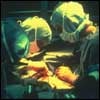
A Brief History
When a beloved individual in the Crown Heights Jewish community had a heart attack during a Jewish holiday in 1976, the ambulance arrived too late to save his life. The tragedy gave birth to a Crown Heights volunteer ambulance group, Chevrah Hatzalah, which in Hebrew literally means rescue team.
The first ambulance was purchased by the founder of the Brooklyn rescue team, Rabbi Yehuda Leib Bistritzky. The van was parked outside of Lubavitch World Headquarters. Although, at the time that was a central location in the community, it also got them in trouble.
The Rebbe, Rabbi Menachem Mendel Schneerson, of righteous memory, sent a message to Rabbi Bistritzky instructing him to remove the caduceus from the Hatzalah logo. The Rebbe explained that the Greek symbol is sourced in idolatry and should not be used. It was immediately removed and later replaced with a heart that has been adopted by many of the Jewish volunteer groups.1
Where to Keep the Ambulance?
One would think the best place to keep an ambulance would be in an indoor parking garage. Keeping it in a warm place, protected from the elements, would prevent the vehicle from needing to be warmed up and save time in an emergency.2
Nevertheless, when exiting the Kingston Avenue train station the ambulance is parked outside on the cold street. A contraption of wires hangs out from the synagogue building to keep the ambulance warm.3
But why? Who would want to see an ambulance every day? Why would we want to be reminded of sick people? Anyone who has been rushed to the hospital in an ambulance will never forget the misery of the ride.
But the Rebbe, with his passion for finding the positive in everything, saw it very differently. The Rebbe emphasized the importance of preventive medicine. The Rebbe encouraged doctors to dedicate themselves to preventing illness, rather than waiting until people are sick and then treating them.4
The Rebbe explained that when a person knows there are competent doctors available, it gives the person a certain serenity and peace that prevents illness.
Similarly, the Rebbe explained that seeing the ambulance regularly will remind people to be preemptive with their health and take steps to staying healthy.
“Hopefully, like this, they will never have to see a doctor in the case of emergency!”5





